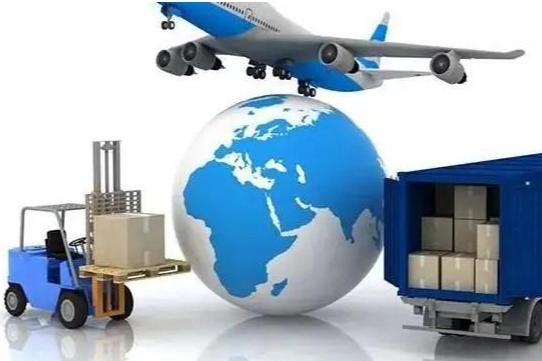Are you interested in importing hardware products from China but feel overwhelmed by the process? Don’t worry! This blog post will provide you with a detailed and simplified guide to help you successfully source hardware from China. From understanding the market and finding reliable suppliers to navigating legal requirements and logistics, we’ll cover all the essential steps. Let’s dive in and discover how you can confidently import hardware from China.
- Building Your Knowledge Base
- Finding Reliable Hardware Suppliers
- Effective Communication with Chinese Suppliers
- Understanding Legal Requirements and Quality Standards
- Making a Purchase Decision
- Shipping and Logistics Made Easy
- Navigating Import Customs Clearance
- Essential Post-Purchase Tasks
1. Building Your Knowledge Base
Identifying the Right Products
Conduct thorough research to identify the specific hardware products you need, considering factors like material, color, order price, shipping fees, and taxes.

Exploring the Chinese Hardware Market
The Chinese hardware market is vast and diverse. Research reputable manufacturers and suppliers that offer high-quality products at competitive prices. Consider attending trade fairs to gain firsthand knowledge and establish connections.
Evaluating Budget and Costs
Assess your budget and associated costs, including transportation, insurance, customs duties, and other charges. Understanding the overall cost is crucial for making informed decisions.
2. Finding Reliable Hardware Suppliers
Online Marketplaces
Utilize reputable online platforms like Alibaba.com and Globalsources.com to find a wide range of hardware suppliers. Look for verified suppliers with positive reviews and ratings.
Trade Fairs and Exhibitions
Attend industry trade fairs and exhibitions in China, such as the China Canton Fair, to meet suppliers face-to-face, see product samples, and negotiate deals.

Here is a list of some major building materials exhibitions in China:
- China International Exhibition for Building & Interior Design (CBD Fair, Guangzhou)
- China International Building & Construction Trade Fair (CBD Fair, Shanghai)
- Shanghai International Furniture Fair (Furniture China)
- Xi’an International Building & Decoration Exhibition (CXBD Fair, Xi’an)
- Jinan International Building & Decoration Exhibition (JNBD Fair, Jinan)
- China International Building & Decoration Fair (CBD Fair, Shenzhen)
- Shanghai International Glass Industry Technology Exhibition (Shanghai Glass Expo)
Supplier Background and Verification
Conduct thorough background checks on potential suppliers. Verify their credentials, certifications, manufacturing capabilities, and quality control processes. Request references or samples to ensure their products meet your standards.
3. Effective Communication with Chinese Suppliers
Initiate Contact
Begin communication with potential suppliers in a professional and respectful manner. Clearly express your requirements, expectations, and timelines.
Negotiate Prices and Terms
Engage in transparent discussions with suppliers about pricing, payment terms, lead times, and shipping arrangements. Seek mutually beneficial agreements while considering factors like product quality and quantity.
Request Product Samples and Conduct Quality Checks
Request product samples to assess their quality, design, and functionality. Perform rigorous quality checks to ensure the products meet your standards and comply with relevant regulations.
4. Understanding Legal Requirements and Quality Standards
Compliance with Import Laws
Familiarize yourself with the import laws and regulations of your country and China. Understand customs procedures, documentation requirements, and any specific import restrictions or certifications.
Useful Resources: Official Import and Export Websites of Select Countries
- United States:- https://www.usitc.gov/
- European Union: –https://ec.europa.eu/taxation_customs/index_en
- Canada: – https://www.cbsa-asfc.gc.ca/
- China: – http://english.customs.gov.cn/
- Australia:- https://www.abf.gov.au/
Safety and Quality Standards
Ensure that the hardware products you import meet safety and quality standards. Look for certifications such as CE, ISO, or RoHS. Verify that the products comply with relevant international and local regulations.

Intellectual Property Protection
Respect intellectual property rights by conducting thorough research and due diligence. Avoid products that infringe upon patented designs or technologies to prevent legal complications.
5. Making a Purchase Decision
Commercial Invoice and Purchase Order
Request detailed commercial invoices and purchase orders that accurately reflect the agreed-upon terms, including product specifications, quantities, prices, and shipping details.
Payment Methods
Select secure and convenient payment methods that protect both parties. Consider options like bank transfers (T/T), escrow services, or letters of credit (L/C). Balance the need for security and buyer protection with transaction costs.
Here is a table listing payment methods commonly used when purchasing hardware products from China, along with their pros and cons:
| Payment Method | Pros | Cons |
| T/T | Enables quick and secure money transfers worldwide. | High transfer fees; lacks buyer protection, which means funds cannot be recovered if the goods are not received or do not meet expectations. |
| PayPal | Offers buyer protection and an easy-to-use platform with instant transactions. | Charges transaction fees, which can be significant for larger amounts; not all suppliers may accept this payment method due to fees and strict rules. |
| L/C | Provides high-level security for both buyers and sellers with bank guaranteeing payment. | The process of setting up a letter of credit can be complex and may involve additional fees; may cause delays due to rigorous checks. |
6. Shipping and Logistics Made Easy
Choosing the Right Freight Forwarder
Select a reputable and experienced freight forwarder who can handle the shipping process efficiently. Consider factors like their network, expertise, reliability, and competitive pricing.

Understanding Shipping Terms (Incoterms)
Familiarize yourself with commonly used Incoterms like EXW, FOB, CIF, DAP, and DDP. Understand the responsibilities and costs assigned to both the buyer and seller at each stage of the shipment.
- EXW (Ex Works): The seller makes the goods available at their premises, and the buyer is responsible for all transportation costs and risks.
- FOB (Free On Board): The seller is responsible for delivering the goods on board a vessel at a named port of shipment. The buyer bears the costs and risks after the goods are loaded on the vessel.
- CIF (Cost, Insurance, and Freight): The seller is responsible for delivering the goods on board a vessel and paying for the cost and freight to a named port of destination. The seller also arranges insurance coverage for the goods during transit.
- DAP (Delivered at Place): The seller is responsible for delivering the goods to the buyer at a named place, cleared for import but not unloaded from the arriving means of transport.
- DDP (Delivered Duty Paid): The seller is responsible for delivering the goods to the buyer at a named place, cleared for import, and ready for unloading. The seller is also responsible for paying any applicable duties and taxes.
Tracking Shipments
Utilize tracking services provided by freight forwarders or shipping carriers. Real-time tracking allows you to monitor the progress of your shipment, anticipate any delays, and plan for efficient delivery.
7. Navigating Import Customs Clearance
Document Preparation and Submission
Gather and prepare all necessary documentation, including commercial invoices, packing lists, bills of lading, and certificates of origin. Ensure accuracy and compliance with customs requirements.

Understanding Duties and Taxes
Research and understand the customs duties, taxes, and fees applicable to your imported hardware products. Consult with customs brokers or local authorities to determine the exact amounts.
Efficient Shipment Release and Delivery
Pay any applicable customs duties and taxes promptly. Collaborate with customs brokers or agents to ensure a smooth release of the shipment. Coordinate with logistics providers to arrange for timely and secure delivery.
8. Essential Post-Purchase Tasks
Ensuring Quality and Testing
Conduct thorough quality inspections and performance tests on the received hardware products. Verify that they meet your specified requirements and standards.
Providing Excellent Customer Service
Establish effective customer service channels to address inquiries, warranty claims, and after-sales support. Respond promptly and professionally to maintain customer satisfaction.
Building Strong Supplier Relationships
Maintain open and transparent communication with your suppliers. Nurture a long-term relationship based on trust, mutual respect, and collaboration. Regularly evaluate and provide feedback to suppliers to drive continuous improvement.
Conclusion
Sourcing hardware products from China can be a rewarding endeavor with proper planning, research, and collaboration. By following this comprehensive guide, you’ll be equipped with the knowledge and strategies needed to successfully import hardware from China. Remember to prioritize product quality, compliance with regulations, and strong supplier relationships. At Dazzles Hardware, we are here to support you throughout the process, providing top-quality hardware solutions. Contact us today to embark on a successful hardware import journey.


